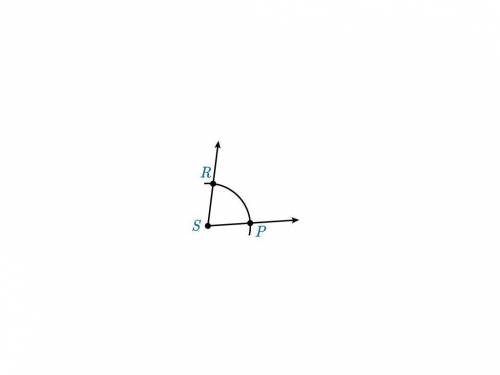
Mathematics, 24.12.2020 02:30 jayzeptor
Trey takes the angle shown, places the point of his compass on S, and draws an arc with an arbitrary radius intersecting the rays of the angle at P and R. Trey claims that as long as he draws two more arcs by placing the needle of his compass on P and then on R, drawing a ray from S through the point at which the arcs intersect, he will be able to bisect ∠S. Is Trey correct?
A. Trey is correct. Since the initial arc was drawn with the point of the compass on S, RS=PS.
B. Trey is not necessarily correct. He will need to ensure that the compass width remains the same for each arc drawn from P and R.
C. Trey is correct. Since the compass is placed on the points P and R to draw the remaining two arcs, the ray drawn through their intersection will bisect the angle.
D. Trey is not necessarily correct. He will need to ensure that the distance from S to P and the distance from S to R are equal.


Answers: 1


Another question on Mathematics

Mathematics, 21.06.2019 19:10
Labc is reflected across x = 1 and y = -3. what are the coordinates of the reflection image of a after both reflections?
Answers: 3

Mathematics, 21.06.2019 21:30
Write 5(6x+4)-2(5x-2) in the form a(bx+c) where a,b and c integers and a> 1
Answers: 2

Mathematics, 21.06.2019 22:30
Olga bought a new skirt that cost $20. sales tax is 5%. how much did olga pay, including sales tax? 7.
Answers: 2

Mathematics, 22.06.2019 01:00
What is the value of the discriminant, b2 ? 4ac, for the quadratic equation 0 = x2 ? 4x + 5, and what does it mean about the number of real solutions the equation has?
Answers: 3
You know the right answer?
Trey takes the angle shown, places the point of his compass on S, and draws an arc with an arbitrary...
Questions

Mathematics, 03.03.2021 19:40


Mathematics, 03.03.2021 19:40




English, 03.03.2021 19:40



English, 03.03.2021 19:40

Business, 03.03.2021 19:40

English, 03.03.2021 19:40





Biology, 03.03.2021 19:40


Mathematics, 03.03.2021 19:40



